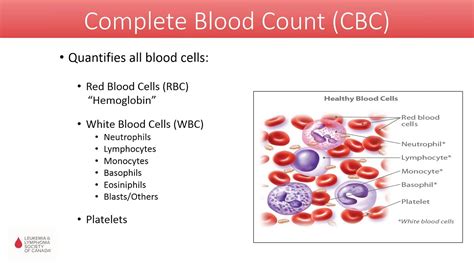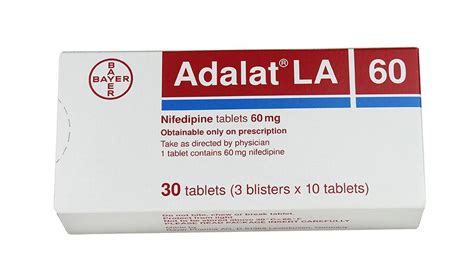Low bloodwork, often referred to as low blood counts, can be a serious condition depending on the specific components of the blood that are affected and the underlying causes. Bloodwork is a critical diagnostic tool used to assess various aspects of health, including the presence of infections, the functioning of organs like the liver and kidneys, and the levels of different blood cells. The primary components of blood include red blood cells (which carry oxygen), white blood cells (which fight infection), and platelets (which help the blood to clot).
A decrease in any of these cell types can signal underlying health issues. For instance, a low red blood cell count (anemia) can lead to symptoms such as fatigue, shortness of breath, and pale skin. A low white blood cell count (leukopenia) can make a person more susceptible to infections. Similarly, a low platelet count (thrombocytopenia) can increase the risk of bleeding.
Understanding the Risks
The seriousness of low bloodwork is closely tied to the severity of the decrease in blood cell counts, the duration of the condition, and the presence of symptoms. In some cases, mild decreases in blood cell counts may not produce noticeable symptoms and can be monitored by healthcare professionals without immediate intervention. However, significant decreases can lead to serious health complications.
Red Blood Cell Count (Anemia)
Anemia is a condition characterized by a decrease in the number of red blood cells or the amount of hemoglobin in the blood. Hemoglobin is a protein in red blood cells that carries oxygen to different parts of the body. Anemia can be caused by various factors, including iron deficiency, vitamin deficiency (such as deficiency in vitamin B12 or folate), chronic diseases (like kidney disease or rheumatoid arthritis), and blood loss due to menstrual bleeding, surgery, or internal bleeding.
Symptoms of anemia can range from mild to severe and include:
- Fatigue and weakness
- Shortness of breath
- Dizziness or lightheadedness
- Headaches
- Cold hands and feet
- Pale skin
Severe untreated anemia can lead to serious complications, such as heart problems, poor pregnancy outcomes, and decreased immune function.
White Blood Cell Count (Leukopenia)
Leukopenia refers to an abnormally low level of white blood cells, which are crucial for fighting infections. This condition can increase the risk of developing infections and make it more challenging for the body to recover from illnesses. Causes of leukopenia include bone marrow disorders, autoimmune diseases, severe infections, certain medications (like chemotherapy), and nutritional deficiencies.
Symptoms can vary but often include:
- Recurring infections
- Fever
- Fatigue
- Body aches
Severe leukopenia can significantly impair the body’s ability to fight off infections, leading to life-threatening complications if not properly addressed.
Platelet Count (Thrombocytopenia)
Thrombocytopenia is characterized by an abnormally low level of platelets in the blood, which can impair the blood’s ability to clot. This condition can result from decreased platelet production, increased platelet destruction, or splenic sequestration. Causes include immune system disorders, bone marrow failure, certain medications, viruses, and genetic conditions.
Symptoms can range from mild to severe and include:
- Easy bruising
- Bleeding gums
- Nosebleeds
- Heavy menstrual bleeding
- Blood in the urine or stool
Severe thrombocytopenia can lead to serious bleeding complications, including internal bleeding, which can be life-threatening.
When to Seek Medical Attention
It’s essential to seek medical attention if you’re experiencing symptoms associated with low bloodwork or if you’ve been diagnosed with a condition affecting your blood cell counts. Prompt medical evaluation is crucial for determining the underlying cause of low bloodwork and initiating appropriate treatment to prevent complications.
Diagnostic Approaches
Diagnosing the cause of low bloodwork typically involves a combination of physical examinations, medical histories, and laboratory tests. Complete Blood Counts (CBCs) are commonly used to assess the levels of different blood cell types. Depending on the suspected underlying cause, additional tests might be ordered, such as blood smears, bone marrow biopsies, or tests to evaluate organ function.
Treatment and Management
Treatment for low bloodwork depends on the underlying cause, severity, and the specific blood cell type affected. For anemia, treatment might include iron supplements, vitamin B12 injections, or addressing underlying chronic conditions. For leukopenia, treatment could involve medications to stimulate white blood cell production or preventive measures against infections. For thrombocytopenia, treatment might include medications to reduce platelet destruction, platelet transfusions, or spleen removal in some cases.
Prevention
Preventing low bloodwork involves maintaining a healthy lifestyle, including a balanced diet rich in essential nutrients, regular physical activity, and avoiding substances that can impair blood cell production, such as excessive alcohol. Regular health check-ups can also help in early detection and management of conditions that might lead to low bloodwork.
Conclusion
Low bloodwork can signal serious health issues, especially when associated with significant decreases in red blood cells, white blood cells, or platelets. Understanding the risks and recognizing the symptoms are crucial for early detection and treatment. By maintaining a healthy lifestyle and seeking medical attention when necessary, individuals can reduce their risk of developing serious complications associated with low bloodwork.
What are the common causes of low red blood cell count?
+The common causes of low red blood cell count (anemia) include iron deficiency, vitamin deficiency (such as vitamin B12 or folate deficiency), chronic diseases (like kidney disease or rheumatoid arthritis), and blood loss due to menstrual bleeding, surgery, or internal bleeding.
How does a low white blood cell count affect the body?
+A low white blood cell count (leukopenia) increases the risk of developing infections and makes it more challenging for the body to recover from illnesses, as white blood cells play a crucial role in fighting off infections.
What are the symptoms of a low platelet count?
+Symptoms of a low platelet count (thrombocytopenia) include easy bruising, bleeding gums, nosebleeds, heavy menstrual bleeding, and blood in the urine or stool, indicating the body's impaired ability to form blood clots.
When should I seek medical attention for low bloodwork?
+Seek medical attention if you're experiencing symptoms associated with low bloodwork, such as fatigue, shortness of breath, recurring infections, or signs of bleeding. Prompt evaluation can help determine the underlying cause and appropriate treatment.
Can low bloodwork be prevented?
+While not all cases of low bloodwork can be prevented, maintaining a healthy lifestyle, including a balanced diet, regular physical activity, and avoiding harmful substances, can reduce the risk. Regular health check-ups are also important for early detection and management of underlying conditions.
In conclusion, understanding the implications of low bloodwork and recognizing its symptoms are vital steps in managing and treating the condition. By adopting a proactive approach to health and seeking medical care when necessary, individuals can mitigate the risks associated with low blood cell counts and maintain their overall well-being.



